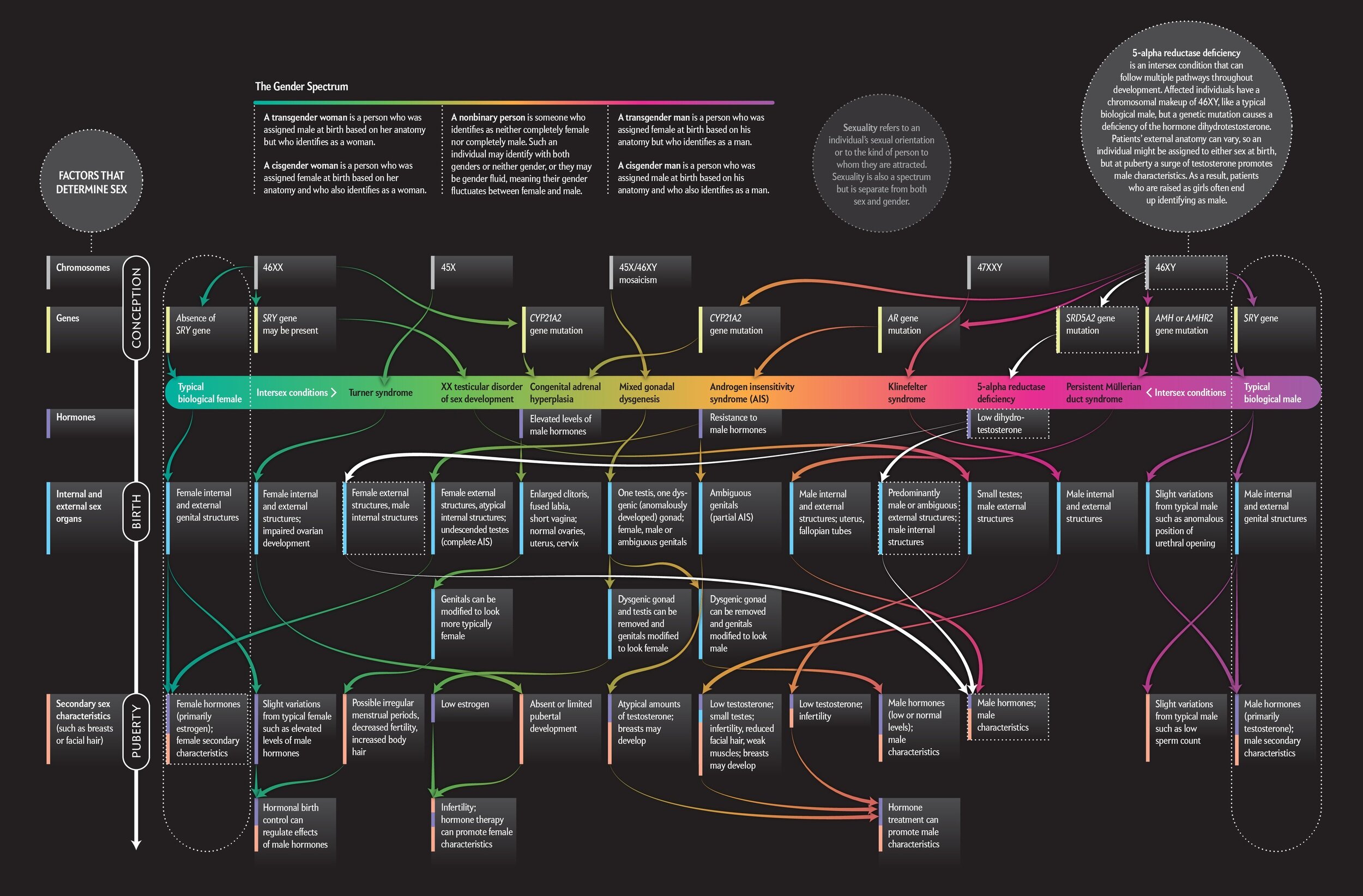In this SF Chronicle piece, Ash Zemenick discusses evidence for biological sex as a continuum rather than a binary. They argue that humans whose chromosomes, gametes, or hormones do not fit into a binary are common and that it is more useful to view them as a form of diversity rather than as an exception to a rule.
If the girl clown fish leaves the boy clown fish, the boy clownfish changes his body into a girl's! [Gender Showcase, K-5]
Clown Fish
The girl Clown Fish body is larger than the boy body. And if the girl goes away and leaves the boy Clown Fish with the little fishes, he changes his body into a girl Clown Fish.

















